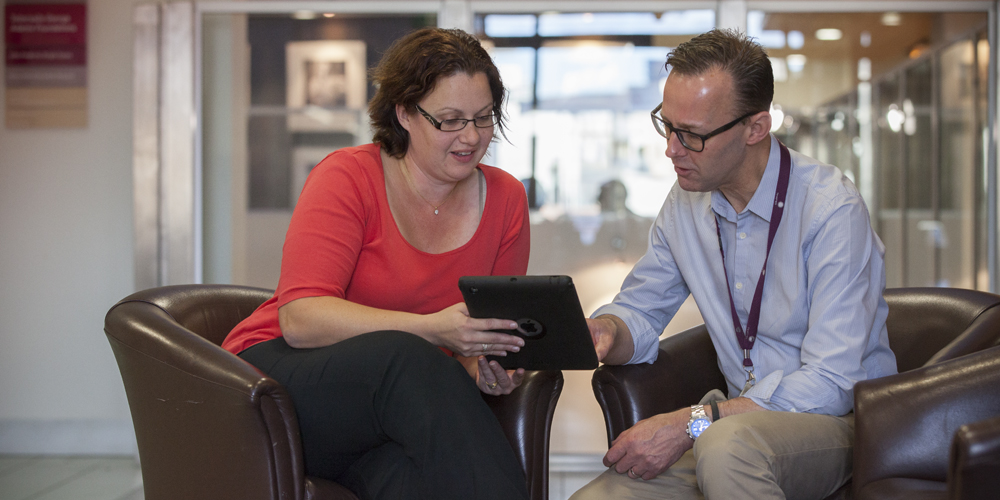
Our NISC team has been running a pilot project to study the effectiveness of linking mums and babies through technology. Using an application called Facetime, known as videotelephony, our NISC and CCU teams have been helping to connect families.
And on the front page of the Sunday Age on Mother’s Day, Hayley MacKay’s shared her experience. She told how her son Alfie wasn’t expected to arrive in time for Mother’s Day.
Hayley told how at 30 weeks’ pregnant checks revealed her blood pressure was dangerously high, putting her life and that of her unborn baby at risk. Alfie was born in an emergency caesarean mid-April at the Women’s.
Because Alfie’s mum was too ill to see him initially, the team at the Women’s connected the family through technology. As part of a NISC research project, iPads using Facetime linked to Alfie’s cot and his mum’s hospital bed brought them together.
Associate Unit Manager/Data Manager of Neonatal Services, Melissa Drew, said the concept of using Facetime - which makes visual telephone calls to communicate with unwell mothers post-delivery originated from the "Dad's Group" run by A/Prof Carl Kuschel.
Prof Kuschel found that dads were feeling a burden of responsibility regarding relaying of information between medical staff and the mother. Melissa said in addition to reducing this stress for fathers the Facetime project also aimed to:
- Increase bonding between mother and baby, through enabling mother and baby to hear (and see) each other
- Alleviate the “fear of the unknown” for mothers
- Increase maternal self-esteem
- Increase family involvement in care
- Promote positive relationships between families and the healthcare team
- Increase satisfaction with overall healthcare experience
“As staff have become more aware of the pilot program and more confident with using iPads, we have now begun using Facetime in a much wider variety of situations,” Melissa said.
This includes mothers who are post-caesarian and not yet able to visit, those receiving treatment for pre-eclampsia post-delivery in our Birth Suite. It is also being used when babies have been transferred to the Women’s from another hospital, but the mother remains an inpatient at the referring hospital.
Melissa said feedback had been positive from families and also staff at the Women’s.
First-time mum Hayley told journalist Kate Hagan about using Facetime to see baby Alfie:
‘‘Even though it wasn’t a physical experience, at least it was my experience in the moment with him, which is something I hadn’t had, except for a couple of minutes when he was put on my chest after he was born," Hayley said.
‘‘It was really nice to be able to see him and know he was fine in that moment, and I didn’t have to worry about his breathing."
Our medical director of neonatal services, Carl Kuschel, said “Facetime’’ was suggested as a way to link mums and babies, as well as staff who could provide updates to families reunited through technology.